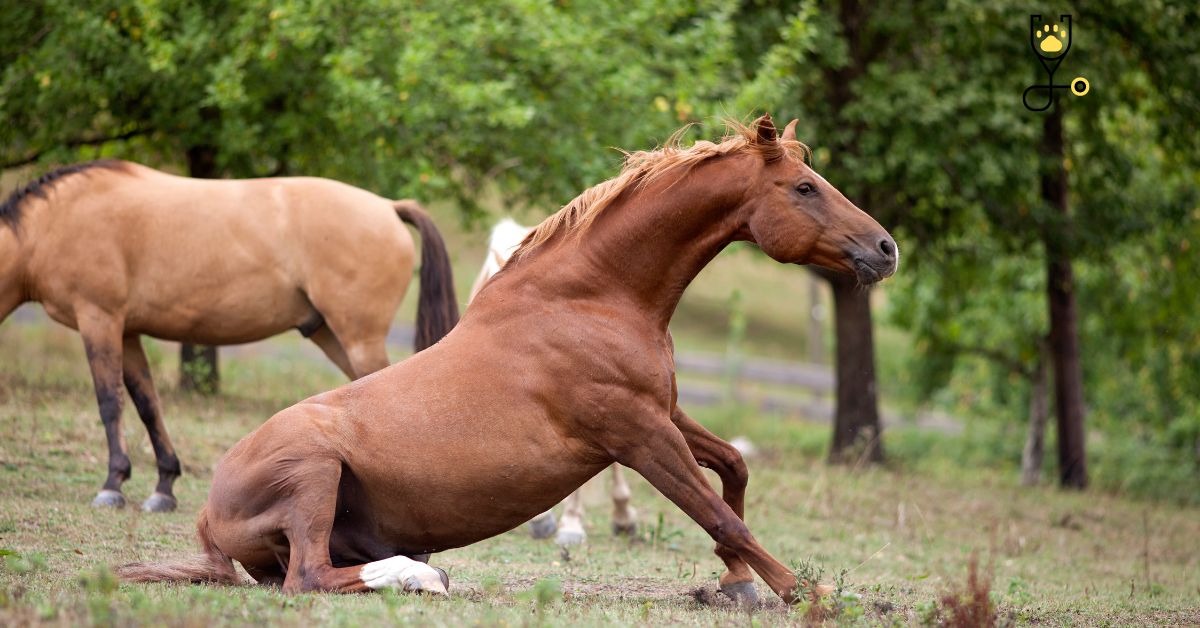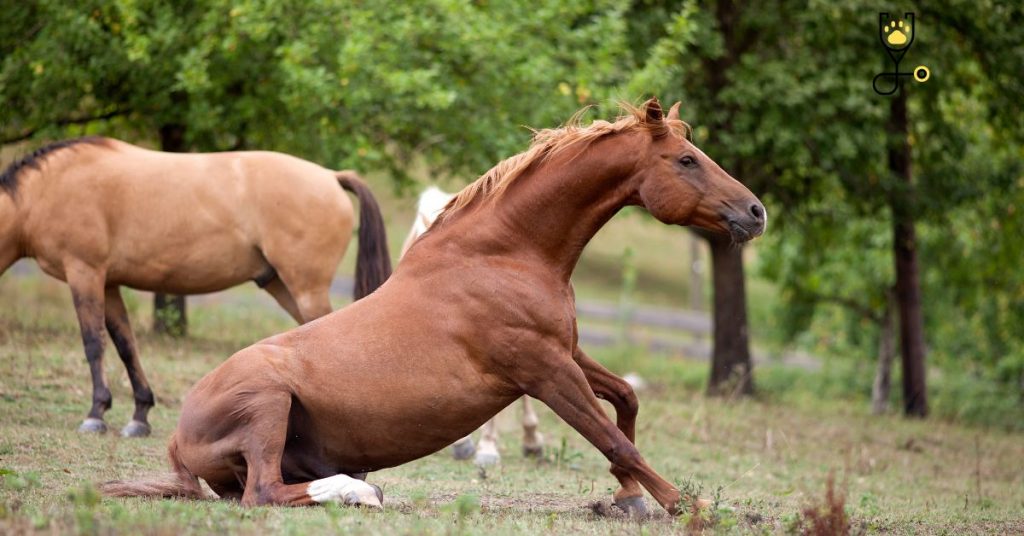Cast horses can be a challenge to get back on their feet, but it is not impossible. There are a few things you can do to help your horse regain its balance and start walking again. In this blog post, we will discuss the methods you can use to help your cast horse and some tips to keep your horse safe.
Make sure. Keep reading for more information!
What Is A Cast Horse?
A cast horse is a horse that has been immobilized in one position for an extended period of time. This can be due to an injury, surgery, or other medical issues. They are unable to move their legs independently and need help to get up and down.
How To Get Your Cast Horse Back on Its Feet?
So, you want to help your cast horse get back on its feet? Here are a few things you can do:
1. Establish a Good Relationship With the Horse
The most important thing to do when helping a cast horse back on its feet is to establish a good relationship with the animal. If your horse doesn’t trust you, it will be difficult for him or her to willingly work with you in order to regain movement. Spend time getting to know your horse and build up its trust before attempting any physical movements.
2. Identify and Treat Any Underlying Health Conditions
If your horse has been immobilized due to an injury or other medical issues, it’s essential that you identify and treat any underlying health conditions before attempting to help the horse move.

3. Start Slow with Physiotherapy
Once your horse is ready for physiotherapy, start slowly with movements. Begin by gently massaging the legs, gently stretching them out, and then encouraging movement of the limbs. This can help your horse regain strength in its muscles and joints so that it’s able to stand up on its own eventually.
4. Create a Safe Environment
In order to ensure your cast horse’s safety while regaining mobility, make sure you create a safe environment for them to work in. Make sure the area is free of obstacles and other distractions that can cause the horse to trip or stumble.
5. Monitor Progress
Once you’ve started helping your horse regain mobility, it’s important to monitor its progress. Make sure you take note of any changes in the horse’s behavior or movements and adjust your methods accordingly.
6. Set Realistic Goals

It’s important to set realistic goals when helping a cast horse get back on its feet. Be honest with yourself and your horse about what you can accomplish in the short-term and long-term, and give yourself time to reach those goals. Rome wasn’t built in a day, so don’t expect your horse to be walking on its own right away. With patience and dedication, you can help your horse regain its strength and mobility. Remember to take it slow, create a safe environment for the horse, and monitor progress along the way. With enough time, you can get your cast horse back on its feet!
7. Seek Professional Help
Finally, if you find yourself struggling with helping your cast horse move again, don’t hesitate to seek professional help. A veterinarian or physiotherapist can provide invaluable guidance and advice on how best to help your horse regain its mobility.
Tips for Keeping Your Cast Horse Safe
1. Provide Proper Support: When providing support for your cast horse, it is important to make sure that the underbelly of the horse is properly supported at all times. If the animal becomes unbalanced or falls, there is a chance of serious injury.
2. Take Breaks: As with any exercise routine, it is important to take breaks when working with a cast horse. Make sure to give your horse time to rest and recuperate before resuming activity.
3. Use Caution: Be cautious when working with your cast horse as they may become startled easily if not handled properly. Move slowly and use soft tones so as to not scare them off or cause further injury.
Conclusion
Getting your cast horse back on its feet is no easy task. But with the right approach, you can help your horse regain mobility and strength in a safe and controlled environment. Make sure to establish a good relationship with the animal, identify and treat any underlying health conditions, start slowly with physiotherapy, create a safe environment for the horse to work in, monitor progress, set realistic goals, and seek professional help when necessary. With patience and dedication, you can get your cast horse back on its feet in no time! Good luck!
Frequently Asked Questions
Q: How long will it take my cast horse to regain mobility?
A: Every horse is different, so there is no definitive answer. However, with a slow and steady approach, your horse should be able to gain strength and mobility over time.
Q: How can I ensure the safety of my cast horse?
A: Make sure that you create a safe environment for your horse with no obstacles or distractions that could cause them to trip or stumble. Additionally, provide proper support to their underbelly and take breaks throughout therapy sessions. Finally, move slowly and use soft tones when handling the animal.
Q: Can I do physiotherapy at home?
A: Yes! Physiotherapy can be done at home with the right guidance and supervision. However, it is important to seek professional help if you find yourself struggling or if your horse exhibits any concerning behaviors. This will ensure that the horse’s progress is monitored properly and that their safety is not compromised in any way.
Q: What are some signs that my cast horse may need medical attention?
A: Signs that your cast horse may require medical attention include excessive fatigue, unusual behavioral changes, prolonged pain, or difficulty standing up from a lying position. If your horse displays any of these symptoms, contact a veterinarian immediately for further evaluation.





